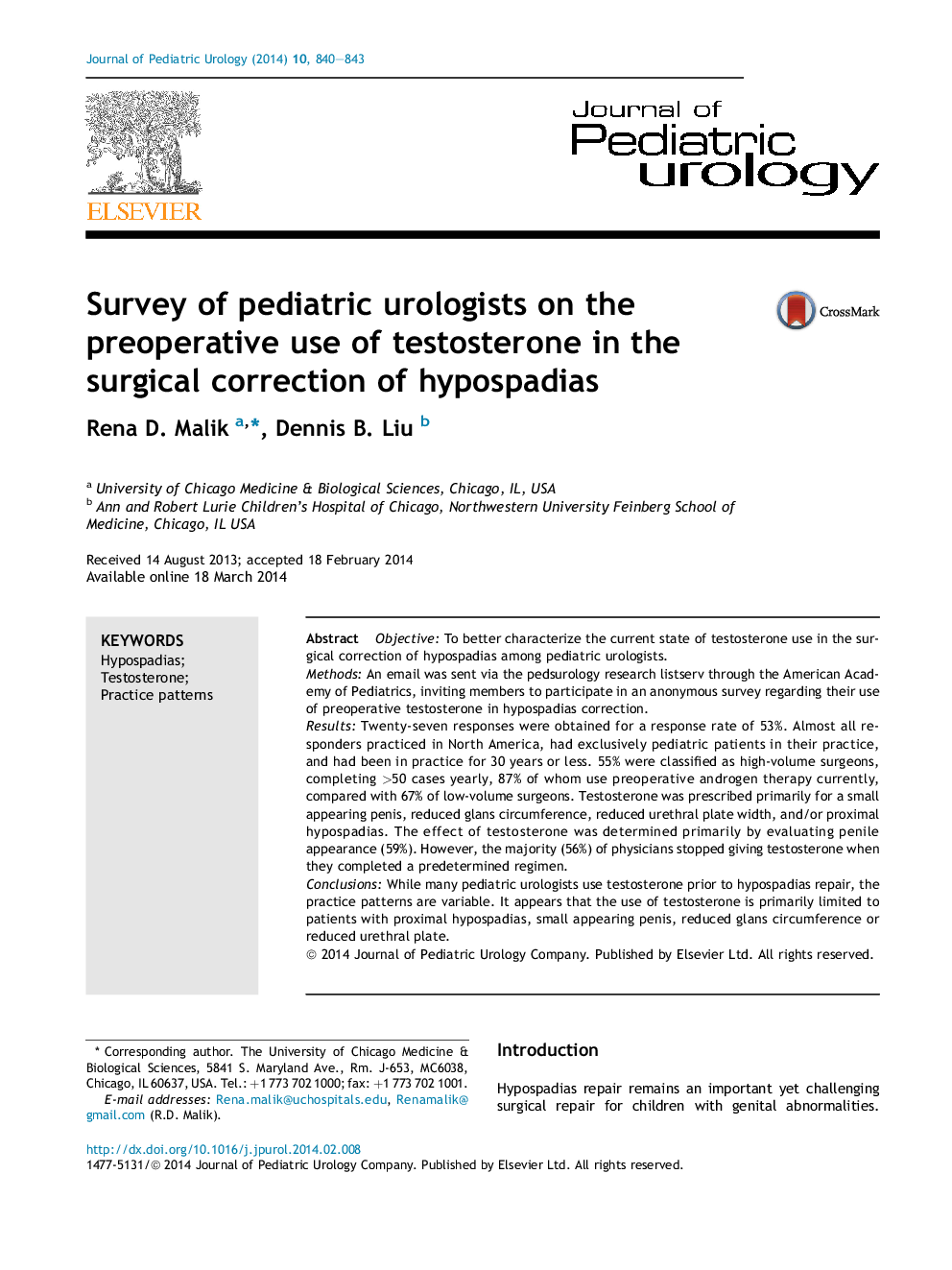| Article ID | Journal | Published Year | Pages | File Type |
|---|---|---|---|---|
| 4162350 | Journal of Pediatric Urology | 2014 | 4 Pages |
ObjectiveTo better characterize the current state of testosterone use in the surgical correction of hypospadias among pediatric urologists.MethodsAn email was sent via the pedsurology research listserv through the American Academy of Pediatrics, inviting members to participate in an anonymous survey regarding their use of preoperative testosterone in hypospadias correction.ResultsTwenty-seven responses were obtained for a response rate of 53%. Almost all responders practiced in North America, had exclusively pediatric patients in their practice, and had been in practice for 30 years or less. 55% were classified as high-volume surgeons, completing >50 cases yearly, 87% of whom use preoperative androgen therapy currently, compared with 67% of low-volume surgeons. Testosterone was prescribed primarily for a small appearing penis, reduced glans circumference, reduced urethral plate width, and/or proximal hypospadias. The effect of testosterone was determined primarily by evaluating penile appearance (59%). However, the majority (56%) of physicians stopped giving testosterone when they completed a predetermined regimen.ConclusionsWhile many pediatric urologists use testosterone prior to hypospadias repair, the practice patterns are variable. It appears that the use of testosterone is primarily limited to patients with proximal hypospadias, small appearing penis, reduced glans circumference or reduced urethral plate.
